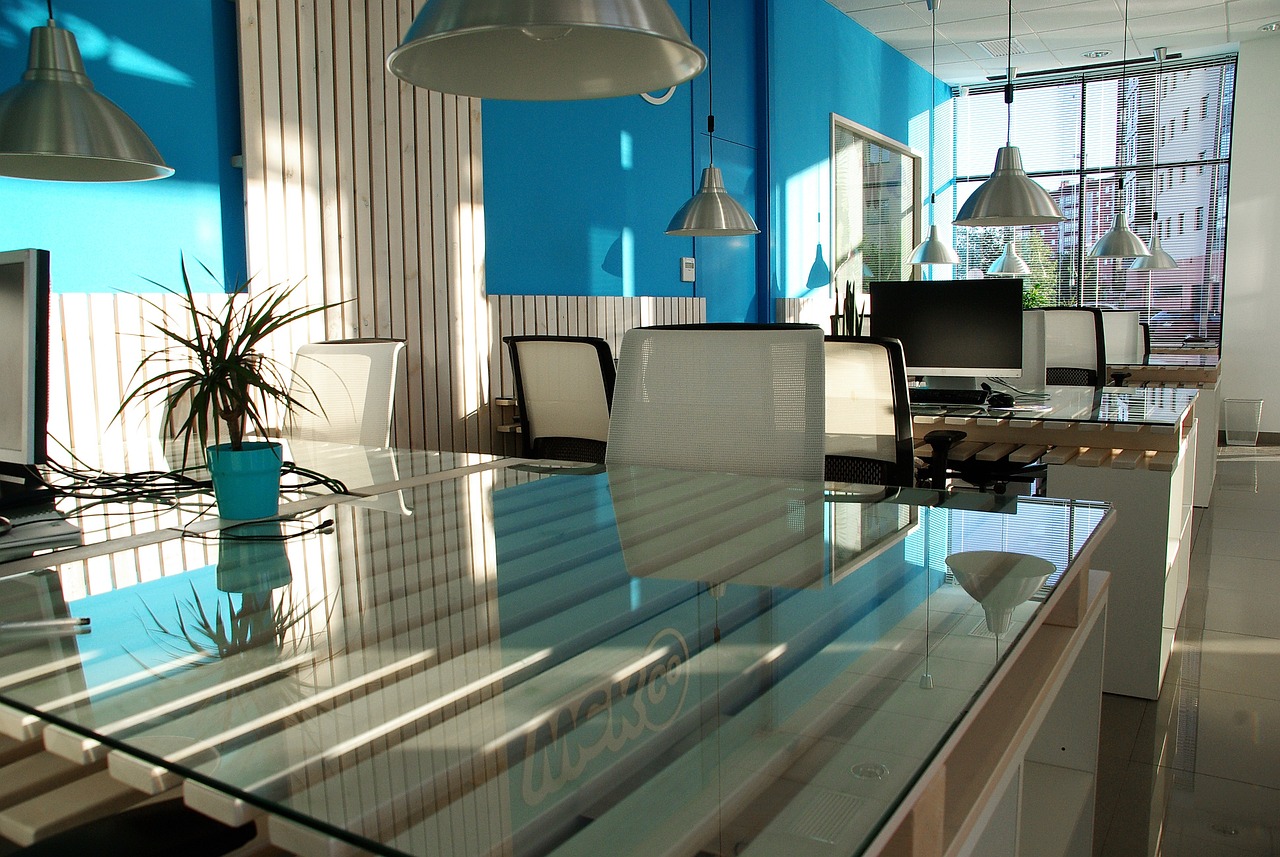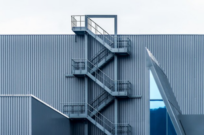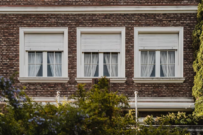The Future of Office Design: Exploring Innovative Materials to Create Inspiring Work Environments


Andrea Erickson
Andrea Erickson, an esteemed BPA Advisor specializing in Interior Design & Staging, takes delight in sharing her extensive knowledge and expertise in renovation and interior design. With a focus on interior design and staging, Andrea contributes valuable insights that shape discussions on innovative construction practices and materials, particularly in the realm of creating aesthetically pleasing and functional interiors.
As workplace trends evolve and innovative trends advance, so too does the way designers build our corporate spaces. Gone are the days of sterile cubicles and monotonous layouts – today's offices are vibrant, dynamic, and inspiring. From modular furniture that adapts to individual needs to eco-friendly designs that prioritize sustainability, the future of office design is all about creating environments that foster creativity and productivity.
What is Office Design?
Office design refers to the arrangement and layout of an office space. It involves aspects such as the placement of desks, chairs, computers, and other necessary equipment. The goal is to create a workspace that is conducive to productivity and is comfortable for the employees who work there.
There are many factors to consider when designing an office, including:
- Space Utilization: How the available space is used is important in office design. It includes the placement of furniture and equipment, the layout of individual workstations, and the arrangement of shared spaces like meeting rooms or break areas.
- Technology Integration: Office design needs to incorporate spaces for technology like computers, printers, projectors, and more. This also includes considerations for power outlets, network connectivity, and cable management.
- Flexibility: Offices should be flexible spaces that can adapt to changing needs. This might involve creating multipurpose areas that can be used for different activities, or using modular furniture that can be easily rearranged.
- Sustainability: More and more businesses are considering sustainability in their office design. This includes eco-friendly materials, maximizing natural light to reduce energy consumption, or incorporating plants for better air quality.
Functionality, comfort, and aesthetic appeal all play a role in productivity, employee satisfaction, and the company's image.

Innovative Materials for Inspiring Work Environments
Biophilic Materials
Biophilic design is a concept within the building industry aimed at increasing occupant connectivity to the natural environment through the use of direct nature, indirect nature, and space and place conditions.
This can be achieved in many ways, such as:
Direct Nature
This refers to incorporating natural elements such as plants, water features, sunlight, or animals into a space or place.
Indirect Nature
Refers to nature-derived but non-living elements. This could be images of nature, natural materials like wood or stone, nature-referencing colors, or organic shapes.
Space and Place Conditions
This refers to creating a rich sensory experience that mimics nature. It might involve creating spaces that provide shelter, creating views of nature, or designing spaces that mimic natural environments. The principle behind biophilic design is that being in close contact with nature improves our well-being, reduces stress, and enhances creativity and clarity of thought.
Ergonomic Furniture: Prioritizing Comfort and Well-Being
Ergonomic furniture is designed to support the user's body in the most comfortable and health-conscious way possible, helping to reduce the risk of stress, discomfort, and physical injury.
Here are some examples of ergonomic furniture and their benefits:
- Ergonomic Chairs
- Adjustable Desks
- Ergonomic Keyboards and Mouse
- Monitor Stands
- Footrests
Ergonomic furniture can be beneficial in both home and office environments, contributing to increased productivity, comfort, and overall well-being, while reducing the risk of developing musculoskeletal disorders.
Smart Materials: Interactive and Adaptable Spaces
Smart materials and advanced technology are indeed reshaping the future of office design, particularly in the retail space where customer interaction and brand experiences are critical. The goal is to create spaces that are adaptable, flexible, interactive, and foster creativity.
- Dynamic Glass Panels: Also known as smart glass or switchable glass, these panels can alter their light transmission properties based on sunlight, temperature or via a simple switch. This can help control the amount of light and heat that enters a space, reducing the need for blinds or shades and allowing for more efficient use of energy.
- Modular Walls: spaces to be reconfigured easily and quickly based on changing needs. This could be a small meeting room that can be expanded for a larger group, a private office that can be opened up for a collaborative project, or a quiet corner that can be created for focused work. These systems are available in wood finishes, cloth finishes and clear glass.
- Interactive Surfaces: Surfaces equipped with touch-sensitive technology or augmented reality (AR) capabilities can turn a static table or wall into an interactive display or workspace. These can be used for presentations, collaborative brainstorming, or to provide interactive customer experiences.
Acoustic Solutions: Enhancing Concentration
In the workplace design industry, noise pollution is a significant concern for people working in office settings. To address this issue, businesses are implementing acoustic solutions as part of current design trends. These solutions include sound-absorbing panels, ceiling baffles, and noise-canceling technologies, which are all essential elements of retail design.
By incorporating these features, distractions are minimized, allowing employees to concentrate better and fostering a more productive work environment.
Trends and Research on the Future of Office Design
Open Floor Plans Enhance Collaboration and Communication
Open floor plans have become a popular trend in executive office designs, providing collaborative working spaces for people to enhance their experience. By removing physical barriers, these layouts foster unity and teamwork among colleagues, encouraging communication and the free flow of ideas.
A glass railing can contribute significantly to an open floor plan office design by enhancing the sense of openness and seamless connectivity. They allow for unobstructed views across the space, ensuring that the visual continuity is not broken, thereby making the area feel larger and more integrated.
The transparent nature of glass also maximizes the penetration of natural light, making the office feel brighter and more inviting. Additionally, glass stair railings add a sleek, modern aesthetic that can lend a sense of sophistication and innovation to the workplace.
Activity-Based Working Models Provide Flexibility
In response to evolving workplace trends, activity-based working models are gaining traction among corporate office designers. These designs offer flexibility for different tasks by providing various workspaces tailored to specific activities. Employees can choose from collaborative areas for brainstorming sessions, quiet zones for focused work, or casual spaces for informal meetings.
Natural Light Boosts Productivity and Mood
Research has shown that natural light plays a crucial role in the future of retail office design. It not only enhances aesthetics but also has significant benefits for productivity and mood in the workplace. Incorporating large windows, skylights, or demountable glass partitions allows ample sunlight to flood the retail workspace, creating a more vibrant and energizing environment that people need.
Holistic Work Environments and Corporate Culture
Inclusive corporate office designers create spaces that promote diversity, creativity, and innovation. When people feel included and valued in executive office designs, they contribute unique perspectives and ideas, fostering collaboration and team success.
Well-designed communal areas in the executive office are essential for encouraging social interactions among people.
These spaces provide opportunities for informal conversations, brainstorming sessions, and team bonding activities.
Tech Integration in Modern Office Design
The future of office design is all about exploring innovative materials to create inspiring work environments. One key aspect of this evolution is the integration of technology into modern office spaces. By incorporating IoT devices, smart building systems, virtual reality (VR) technology, and wireless charging stations, businesses can enhance efficiency and optimize energy consumption.
These advancements also facilitate virtual meetings and promote convenience for an increasingly mobile workforce.
Incorporation of IoT Devices
- Automates routine tasks
- Enhances efficiency
- Improves productivity
These smart devices can be connected to various systems within the workplace, such as lighting, temperature control, and security. By automating routine tasks like adjusting lighting levels or regulating room temperature based on occupancy, team members can focus on their work without distractions.
Smart Building Systems
- Optimizes energy consumption
- Reduces environmental impact
- Enhances sustainability
Smart building systems play a crucial role in modern office design by optimizing energy consumption for people while reducing environmental impact. Through the use of sensors and intelligent controls, these systems monitor and adjust lighting, heating, ventilation, and air conditioning (HVAC), ensuring optimal conditions for people while minimizing waste. This not only saves costs for people but also aligns with sustainability goals.
Virtual Reality (VR) Technology
- Facilitates virtual meetings
- Saves time on travel expenses
- Enhances collaboration
Virtual reality (VR) technology has revolutionized the way people in executive offices conduct meetings. With VR-enabled platforms and headsets, employees can participate in virtual meetings from anywhere in the world without the need for physical travel. This not only saves time but also reduces travel expenses significantly.
VR facilitates immersive collaboration experiences where teams can visualize designs or prototypes together in a shared virtual space.
Wireless Charging Stations
- Promotes convenience
- Supports mobile workforce
- Reduces clutter
In an increasingly mobile workforce, wireless charging stations have become essential for people in modern office design. These stations eliminate the need for cables and adapters, allowing employees to conveniently charge their devices without searching for outlets. By reducing clutter and promoting a clean workspace, wireless charging stations contribute to a more organized and efficient work environment for people.
Reimagining Office Design for the Future
The evolution of office design is guided by cutting-edge trends and comprehensive investigation. Emphasis is on developing versatile spaces that accommodate varied work methods and stimulate teamwork among staff. This strategy enables corporations to respond to the dynamic necessities of their teams and cultivates a feeling of unity within the company.
For the creation of genuinely motivational workspaces, it's crucial for enterprises to adopt these revolutionary materials and design philosophies. By integrating these elements, they have the potential to draw in high-quality professionals, enhance staff motivation, and, in the end, propel corporate achievement.
Get Smarter About Building Products
Join 50,000+ subscribers and get our 3 min daily newsletter on what matters in the building materials industry.
You might like this


7 Benefits of ACM Panels: A Versatile Building Material
In the ever-evolving field of construction and architecture, choosing the right materials can make all the difference in the outcome of a project. One such versatile material that has gained popularity in recent years is ACM, or Aluminum Composite Material, panels. ACM panels are renowned for their unique combination of properties, making them suitable for […]


9 Exterior Building Materials for a Superior Home Renovation
Embarking on a home renovation project is an exciting opportunity to enhance both the aesthetics and functionality of your living space. Choosing the right exterior building products can significantly impact the overall quality and durability of your renovation. In this article, we will explore nine top-notch building products that can elevate your home’s exterior. 1. […]


Essential Elements in Building a Food Manufacturing Facility
Designing and constructing a food manufacturing facility is a complex process that requires careful planning and attention to detail. To ensure a successful and efficient operation, several essential elements need to be incorporated into the facility’s design. In this blog, we will explore the key components, including food production facility layout, the importance of industrial […]